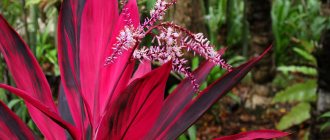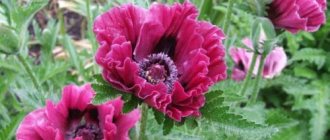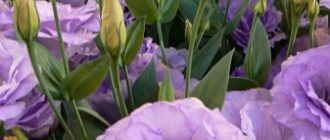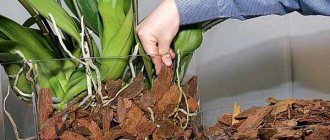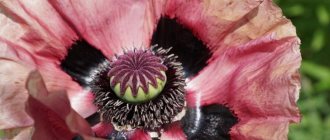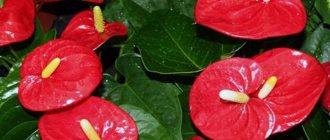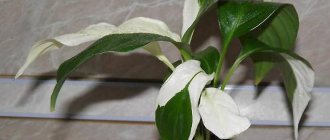Homeland of the Pinks
The Pink family can be found throughout the Earth, with the exception of those areas where plants cannot grow in principle. Deserts and Antarctica fall under this category.
Otherwise, the entire Pink family is distributed from semi-deserts to the tundras of the Arctic. However, the greatest species diversity of these plants is observed in the Northern Hemisphere, in the temperate and subtropical zones.
Traditionally, Pinks grow in light forests, clearings, meadows, savannas, tundras, along the banks of rivers, lakes, and swamps.
Plants classified in this family are rarely dominant in a particular area of habitat, although they are always able to attract attention and visually occupy a central place among all the surrounding flora.
Numerous representatives of the Rosaceae family can grow in different forms: from perennial herbs to shrubs, subshrubs and trees. The family includes 4 subfamilies:
- Spiraea.
- Pink.
- Appleaceae.
- Plum.
More than 1,000 species have been registered in Russia (there are 4,380 species and 104 genera of Roses in the world), and 17 of them are listed in the Red Book. The greatest diversity of species and varieties is characteristic of the tropical zone of the Earth.
What is the Rose family?
Roses (Rosaceae or another common variant - Rose hips - the name of the family of dicotyledonous, dioecyta plants.
Previously, in the Russian version, this family was usually called Rosaceae (this form is still found), however, from the point of view of botany, it is more correct to call the plants Pink, which, in turn, according to the modern classification, are included in the order Rosales, the class of Dicotyledonous plants.
Transplanting fuchsia at home
Fuchsias are replanted annually in the spring, before active growth begins, when the roots of the plant have completely reclaimed the soil in the old pot. A new pot that is too large is not suitable; it should be slightly larger than the previous one - 2 - 4 cm in diameter. In the process of replanting fuchsias, it is sometimes necessary to trim roots that are too long (8).
To create a beautiful cascade of fuchsia flowers, you can plant several plants at once in one wide flowerpot, and immediately place them closer to the edges and obliquely to give the future bush a flowing shape. During the growth of green mass, the pot is regularly turned to the light in different directions - then the group will form evenly and lushly.
Ampel and semi-ampel varieties of fuchsia at first have the shape of a bush, but over time, under the weight of numerous buds and flowers, the flexible stems begin to bend beautifully and hang over the edge of the flowerpot. To prevent fragile branches from breaking, they are tied to supports.
THIS IS INTERESTING
One of the first synthetic dyes, obtained in 1856, was given the name “fuchsin” by chemists due to the similarity of the color of its aqueous solutions to the color of fuchsia flowers.
What indoor flowers are classified as Pink?
Quite a few representatives of the Rosaceae family are grown indoors.
The most common varieties of roses are decorative ( tea, hybrid tea, miniature, Bengal ). The most popular varieties are La France, Madame Falco, Kabardinka, Pilgrim, Avalanche, Trioumph, etc.
Details of rose care at home
Also sometimes you can find white Cinquefoil . This plant is not particularly difficult to care for and is quite capable of growing at home. The main problem is to find seed material or cinquefoil seedlings, since they are not found in all flower shops.
Even less common is Chaenomeles japonica (Quince) .
Canna
This stately flower (up to 3 m high) pleases the eye from June to late autumn. The leaves are large, elliptical or oval-oblong, pointed, (25-80 cm long and 10-30 cm wide), green, striped or purple-bronze. Flowers are red, orange, yellow, pink or white. They grow on tall stems and do not wither before frost.
Canna is completely unpretentious, hardly gets sick and does not attract harmful insects, even if it is not treated with anything. However, in the middle zone it is not able to survive the winter without good shelter. The plant comes from the tropics, so it does not like our harsh winters.
- Cannes in autumn: proper care and preparation of flowers for winter
Everything about storing cannas in winter at home, in the basement and cellar.
Rules for caring for Pinks
If we do not forget that the Pink family mainly grows historically in warm countries of the tropical zone, then we can conclude that most species and varieties are especially demanding of warmth and light.
It is these factors that you need to pay close attention to when growing non-hybrid varieties.
- For example, it is optimal for plants to receive light for at least 12 hours a day during the warm season. It is better to give preference not to direct sunlight, but to diffused, soft light.
- The best temperature for growing the Rose family is about +25С. Although the plants can withstand high heat.
- Flowering plants should be watered carefully and often. Fruit-bearing crops are quite undemanding and can rely on natural precipitation.
- The family is not very demanding when it comes to feeding. However, when grown for yields or beautiful flowering, crops should still be fertilized.
IMPORTANT! All plants in the family can be affected by pests or become sick. When treating or treating insects, it is important to remember that some species are farmed for their fruit. Therefore, you need to be careful, follow the recommendations of the drug manufacturers and take breaks between processing and harvesting the fruits.
To date, a huge number of hybrids of different plants from the Rosaceae family have been bred. What does this mean? It is much easier to care for hybrids; they have good immunity and are highly unpretentious. Thanks to this quality, most species can easily be grown in the temperate climate of the Earth and even in some northern regions. The rules for caring for hybrids are standard and are no different from other garden crops.
Aster
Pink flower color is found among both annual and perennial asters. These fluffy stars can decorate any flower garden.
Terry annual aster
New Belgian perennial aster
Plants reproduce well by seeds. When growing aster in seedlings, the seedlings are transplanted into open ground in mid-May (they are not afraid of frost down to –4°C). To do this, choose a well-lit place with deep groundwater. Plants are planted in furrows made at intervals of 45-50 cm.
Seeds can be sown directly in open ground in May. They are lightly sprinkled with soil, watered and covered with film until shoots appear. Seedlings with 4-5 true leaves are thinned out (strong ones are transplanted to another flowerbed).
- Perennial asters - all about planting, care and cultivation in open ground
Everything you wanted to know about growing aster from seeds at home.
Magnolia
The genus Magnolia has about 80 species of plants. In the wild, it is most common in Asia and North and South America.
Magnolia is rightfully called a very beautiful plant: it has large unusual flowers and leaves with a shiny, fleshy structure. There are many variations of petals, each of which is unusual and attractive in its own way.
Flowers can have up to 15 elongated or small star-shaped petals. The color palette is very extensive: you can find white, pink, lilac, purple shades. At the same time, the flowers emit a pleasant soft aroma.
If you have seen such a plant in your city, then most likely it is an Asian species. It is considered one of the most frost-resistant. You may also encounter types such as magnolia kobus, nude or lily-flowered. All of them can withstand a climate that is unfriendly for heat-loving trees.
Magnolia reaches a height of about 5 m. It blooms most brightly from late April to mid-May. The plant has its own fruits: cone-shaped leaflets.
Inside are seeds that are ovoid in shape and have a glossy structure. When the fruits open, the seeds begin to hang from there on thin threads.

